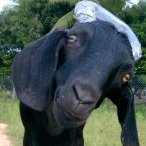Which Camera For Safari?
-
Recently Browsing 0 members
- No registered users viewing this page.
-
Topics
-
-
Popular Contributors
-
-
Latest posts...
-
-
20
Trump fires person in charge of jobs report
He doesn’t need reports, he’s got a sharpie. -
2
Crime Ex-Abbot Vanishes Amid 28 Million Baht Embezzlement Scandal
Surprise surprise - actually no surprise, just normal behaviour. -
7
Report Senator’s Credentials Questioned in ‘Fake Professor’ Scandal
But in the OP they are not saying it is a fake degree.. They are saying it is from an unaccredited school. I fail to see why saying you have a degree from a school means it must be an accredited school. Lots of good schools are unaccredited. Some countries do not even accept accreditation. The degree must be notarized and the US secretary of State must certify it is legitimate. This is a requirement to use a degree in China. They do not accept accreditation.. -
121
Economy US Imposes 19% Tariff on Thailand in Major Trade Shift
No. Cambodia also agreed to stop trans shipment of Chinese goods as part of their trade agreement. Recent news says they're even going to nominate Trump for a Nobel Peace Prize for his work in ending the border conflict with Thailand. I would love to know what the real reason was for that absurd escalation in the border skirmish. But apparently, it has all been resolved amicably, with both Thailand and Cambodia agreeing to crack down on Chinese goods in exchange for lower tariffs on domestically produced products. Call me a conspiracy theorist, but I suspect Cambodia was made an offer they couldn't refuse. -
20
Trump fires person in charge of jobs report
Alarming job (revision of past months) numbers have trump panicked. Trump fires commissioner of labor statistics after weaker-than-expected jobs figures slam markets President Donald Trump on Friday fired Bureau of Labor Statistics Commissioner Erika McEntarfer, hours after the agency reported that job growth in the U.S. had slowed to a near-halt. “We need accurate Jobs Numbers. I have directed my Team to fire this Biden Political Appointee, IMMEDIATELY,” Trump posted on Truth Social. The stunning move came the same day that the BLS reported a gain of just 73,000 nonfarm jobs in July, below market expectations. Trump fires commissioner of labor statistics after weaker-than-expected jobs figures slam markets https://www.cnbc.com/video/2025/08/01/liesman-no-evidence-that-jobs-data-is-politicized.html- 1
-

-
-
Popular in The Pub









Recommended Posts
Create an account or sign in to comment
You need to be a member in order to leave a comment
Create an account
Sign up for a new account in our community. It's easy!
Register a new accountSign in
Already have an account? Sign in here.
Sign In Now